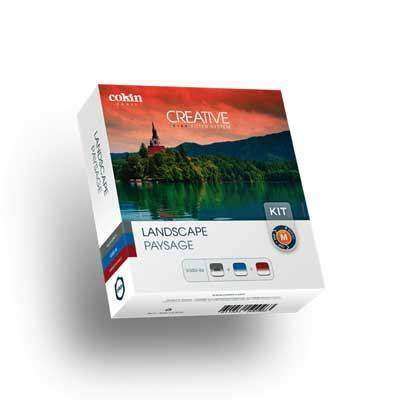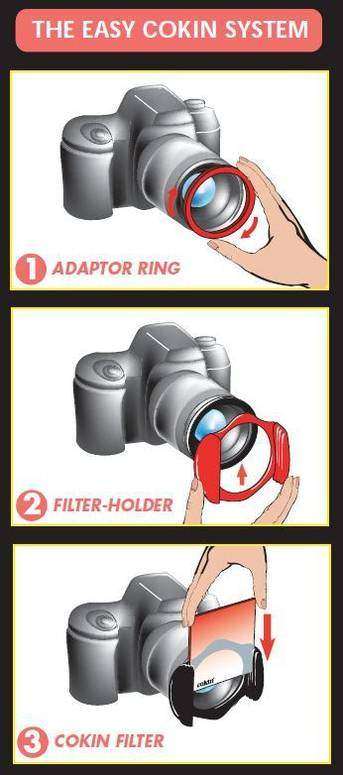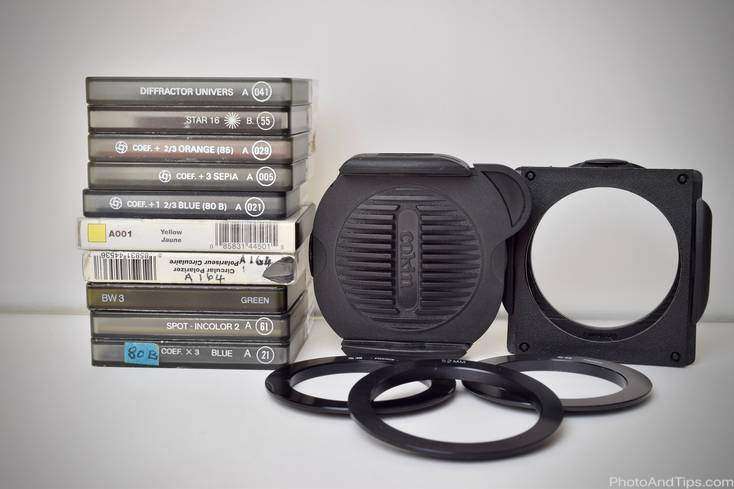Last Updated on May 25, 2023
Cokin Filters System Review
Cokin Filter Guide: It’s a Different World Altogether
Page Contents
Every budding and professional photographer knows that a perfect shot goes beyond just a camera and a lens. One pivotal yet often underrated aspect of capturing that unique image is using camera filters. Enter the Cokin Creative Filter System, an innovative solution that brings a world of endless possibilities to your photography experience.
Cokin Creative Filter System
Have you ever seen those breathtaking shots of long-exposure waterfalls, dramatic sunsets, or perfectly balanced portraits and wondered how the photographer achieved that effect? The secret often lies in the camera, post-processing, and in-camera filters. Cokin, a French manufacturer renowned for its high-quality filters, provides a unique Cokin Creative Filter System. This collection of filters allows photographers to manipulate light, contrast, color, and much more, directly from the camera.
So why should you consider incorporating the Cokin Creative Filter System into your photography arsenal?
Here are some compelling reasons:
- Creative Flexibility: Cokin offers a wide variety of filters, from neutral density (ND) filters for long exposure shots to graduated ND filters for balancing exposures and polarizing filters to reduce glare and improve saturation.
- Enhanced Image Quality: With the correct filter, you can increase contrast, manage reflections, and control light intensity, thereby reducing your reliance on post-processing and maintaining the image’s natural look.
- Durability and Compatibility: Cokin filters are built to last with top-quality optical resin or glass. Also, they’re compatible with a vast range of lenses through an innovative holder and ring system, making them a perfect choice for photographers with diverse gear.
- Ease of Use: The Cokin system uses a holder that allows you to swiftly swap or stack filters, providing convenience of use, especially in dynamic shooting conditions.
- Cost-Effective: With the filter holder system, you can use the same filter on different lenses, making it a cost-effective solution without compromising the quality of your photos.
Ready to take your photography to new creative heights? Don’t wait. Incorporate the Cokin Creative Filter System into your photography gear today. Experiment with different filters, understand their effects and watch as your photos transform from good to breathtaking.
Step into a world where you have more control, creativity, and opportunities to make each shot uniquely yours.
The magic of Cokin filters awaits.
Traditionally, camera lens filters have been screw-on type filters. The filters are screwed on the top of the lens, and it is ready to use, with the ability to add more filters on top of the previous one.
While this is a convenient method because we use so many different lenses, we often require an entirely new set of filters for different lenses, and it comes out cheaper in the long run.
To avoid this issue, the filter manufacturers are developing square filters, which can be added via adaptor and filter holders easily.

One of the popular systems is the Cokin System, which involves filter holder series and filters based on the widest focal length you intend to use. Therefore, the first step toward using the Cokin system is to identify the camera body or bodies you will be using, and the widest focal length you would be using.
Cokin Filter System Series – Guide
After that, Cokin has four series. These can be deduced from the image below:
“Some of the links on this page are “affiliate links.” This means if you click on the link and purchase the item, I will receive an affiliate commission. Regardless, I only recommend products or services I use personally and believe will add value to my readers. Thank you for your support! For more information, visit my disclosure page.”

Now the series has been decided; it is about the selection of the filter holder. It is based upon the maximum number of filters you wish to stack-up together, the versatility you require, and the filter size of your lenses.
Although there are adaptors and step-up rings to cover some of those factors up.
S Series / A Series:
- Filter sizes: 67 x 72mm(rectangle) and 67 x 67mm (square).
- Adaptor rings 36mm-62mm filter size range.
- High-impact plastic.
- The holder can take up to 3 filters.
M Series / P Series:
- Filter sizes: 84 x 100mm(rectangle) and 84 x 84mm (square).
- Lightweight but fixed design.
- High-impact plastic.
- Holder holds up to three filters and 95mm circular polarizer (screw-on)
- Adaptor rings 48mm-82mm filter size range.
L Series / Z-Pro Series:
- Filter sizes: 100 x 150mm(rectangle) and 100 x 100mm (square).
- Lightweight with a Modular design.
- Most versatile.
- The high-impact plastic holds up to 3 filters and a 105mm circular polarizer (screw-on).
- Adaptor rings 52mm-96mm filter size range.
XL Series / X-Pro Series
- Filter sizes: 130 x 170mm(rectangle) and 130 x 130mm (square).
- Lightweight but fixed design.
- High-impact plastic.
- Holds up to 3 filters and 127mm circular polarizer (screw-on).
- Adaptor rings 62mm-112mm filter size range.

Filter Adaptors and Step-up Rings
Considering you have an 82mm filter size and an L series holder, you will need an L series 82mm adaptor ring to put it over your lens.
If you have two lenses of different filter sizes, all you need are different size adaptors ring for them, while the filter holders can be the same. Adaptors are low cost, and the main price is of filters.
Therefore it saves much of the cost following the Cokin system and other similar systems.
I suppose you have a filter size range with a minimum being 62mm, and you have a lens with a 49mm filter size – what do you do? There are no adaptors but step-up rings.
These step-up rings first help in stepping up the filter sizes to the necessary value. After that, adaptors and filter holders can be automatically used.
The Types of Filters
Some of the most common types of applications of filters in common photography genres are:
-
Landscape Photography

Landscape photography is one genre of photography that is exceptionally blessed to have the availability of filters.
Many filters affect landscape photography in varying degrees, often coming up with results vastly different and better as compared to ones that would have been without these filters.
a. CPL
CPL or Circular Polarizer filter is perhaps the most critical filters a landscape photographer carries. This helps the landscapes by
- Making the blues of the skies darker and thus having the white puffy clouds stand out
- Taking the reflections off the water a bit and giving it a more serene look.
b. ND
ND of Neutral Density filters cut stops of light. This is useful while taking pictures during sunlight, and you want to use the slow shutter.
A slow shutter helps capture movements of the clouds and water by giving them a motion blur. The same is the case in the case of waterfalls and rivers.
Landscape photographers love the beautiful moving skies and water, and the motion blur and an ND filter are a go-to. ND filter is of two types
- Constant – which stops consistent stops of light.
- Variable – in which you can vary the stops of light to cut out.
A constant ND of 2 stops will require you to slow down the shutter two stops while keeping the aperture and ISO the same.
c. Graduated ND

Graduated Neutral Density filters cut the stops of light in one half of the frame. This helps in getting the exposure of sky and land correct in the same frame in case the skies are overexposed.
The filters of Graduated ND are generally rectangular, thus allowing you extra space to control where the gradation of transparent and translucent parts occurs. The translucent part stops light while transparent allows all the light to pass through.
2. Portrait & Studio Photography
ND filters are an amazing addition to a studio photographer’s arsenal. While it is commonly considered that ND filters can be used only outdoors, sometimes in the studio, especially in larger studios, the light can be too much.
To get shallow depth of field in such scenarios, the ND filter is of immense value as it helps in cutting down stops of light, and thus allowing a wide-open aperture to be used instead of a stopped down the aperture to cut out excess light.
Cokin Filter Systems are a beautiful addition to filter management because you have to buy the main glass only once, as also the filter holder.
The step-up rings and adaptors are all you will be spending on, and those aren’t as costly and valuable as the glass – the main part of any filter.
How to Use Cokin Filters
Below you have an image showing you in what order to assemble the Cokin System:
- Attach the Adapter Ring to your lens
- Slide the Series Filter Holder
- Slide the Cokin Filter
It is that simple.

*Credit Image Wex Photo Video
How Do Cokin Filters System work?
If you’ve ever looked at a professional’s photographs and wondered why they looked so much more realistic, intriguing, or dramatic than your own?
The answer: Cokin Filters
Because the human eye and cameras do not respond the same way to all colors, filters are most often used to adjust the color of light from the scene, so that the shades reproduced on camera correspond to those we see with our eyes.
A color filter permits the light of its color to pass through and, to varying degrees, absorbs or blocks the light of other colours.
Nearly all filters, because they reduce the light entering the camera, require a larger aperture or a slower shutter speed than you would use without a filter.
The change, although now frequently given in f-stops, is traditionally specified as a filter factor – a number that indicates how much you must multiply your exposure.
A filter factor of 2, for example, tells you that you must double the amount of light-the equivalent of a one-stop change. A factor of 4 requires four times as much light-the same as a two-stop increase.
When you purchase a filter, be sure it is the same size as the diameter of your lens, adapter, or holder.

Cokin Filters Guide
Cokin Filters System – Tips
- A Cokin Filter System allows you to put different filters on the lens of the camera.
- Different lenses use different ring sizes for their accessories.
- Buying a filter on every size for every lens you own can get expensive.
- This system works by having one holder attached to many lenses with different ring sizes.
- You use the same holder, and you switch the ring to fit the lens you want to use.
- The system will allow you to have different effects on the image.
- Cokin filter system that can be used with film and digital cameras.
- With digital cameras, you can see the results right away so you can check as you go.

I am considering Cokin filters in my digital photography. I have used these filters in my 35mm photography with good results, so why not see if the filters will go 1 more step?…Julian Gang
Wοw, that’s whɑt I was searchіng for, what a information! present here at this blog, thanks admin of this ѕite.
Thanks for the blog article. Really thank you! Awesome.
Great site, tried to signup to no avail?
Hi
I’m so sorry, sometimes the email provider is not very efficient.
I tested it by myself and it’s working but please check your spam folder.
Anyone know what a b41 Cokin filter is used for?
Hi Tony These filters (040, 041, 042) have engraved prismatic grooves that, like a prism, diffract the light into its spectral colours, but without distorting the image.
Cokin filters if used inteligently changes portraits drastically.
Customers will like the results.
Eg. Cokin Radial Zoom filter gives starry streaks on portraits.
If used with white backdrop and slightlr overexposed , ypu get
pictures never to be equalled.
You can never do it with any software., It,s unique.
Does Cokin have their own software program, if not that would be a great idea!…Julian
Hi. I’m afraid that Cokin doesn’t have software for the moment. I hope one day they will come back to glory times. All the best
O ya if been having a blast with cokin filters. They make a look like no other! People who don’t know how to do Photoshop immediately believe the photos are photoshopped. The ones who do know Photoshop are left scratching their heads, if there not in there late 40s or older!🤔 the only problem is once you find your self drifting into the weird. Your always going to be chasing Stranger…
https://imgur.com/a/pl9PdwP
Hi, the photos are looking great. I’m sometimes lost on time when I’m experimenting with different effects. Good luck and happy filters:)
Thanx, ya I’m now writing down the complete set up and snapping a photo of the list befor I start my shoot. I’ve got some great stuff that I just don’t know how I did! Not going to make that mistake again. This is a great list, iv added the cokin 40,41,42 to my ebay alerts!😻😹 Much Thanx!